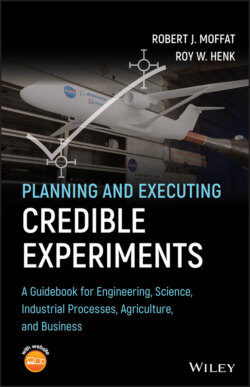Читать книгу Planning and Executing Credible Experiments - Robert J. Moffat - Страница 58
4.1 The Prime Need
ОглавлениеI strongly believe in organizing every research‐type experiment around a question, for several reasons.
1 When your goal is to answer a question, you know you can quit when you have an acceptable answer!
2 If your experimental objective was “to study…,” or “to investigate…,” or “to document…,” then you may never know when to quit. There is no end to “studying” or “investigating.” You will quit only when the money runs out or you get bored or reassigned, but you will never be finished. If, on the other hand, you have a specific question to answer, you can quit when you have the answer or when you can prove that you can't get the answer by this kind of experiment.
3 Knowing the motivating question helps in making the trade‐off decisions during planning and debugging.
A research program generally begins with a “need to know,” an urge on someone's part to solve a problem. Unfortunately, the person who first feels the urge may have in mind some steps toward what he/she thinks is the solution and may present an experiment plan that is a path to that particular “solution” rather than a path to solving the general problem.
To some extent, this can be avoided by specifically addressing the issue of “What question are we trying to answer?” instead of “What are we going to do?”
I (RM) came to this approach to experiment planning after many years of dealing with talented graduate students, each eager to get on with their programs but frequently stalling out when obstacles arose in the lab. I would find them at my door wondering what to do about the latest nuisance. Trying the simple approach of answering their questions, I found that the pace of research was then dictated by the number of hours I spent dealing with their problems. It was like pushing a rope! Every obstacle would bring the program to a halt. This sort of experience must be more common than I had thought, because it is the focus of an American folk song, “There's a Hole in My Bucket,” which is presented below for your amusement (Panel 4.1).
With the help of (and some resistance from) my students, I discovered the problem: I was not communicating well enough. The students and I did not always share the same picture of what should be done next. I decided that this was because I was trying to tell them what to do, whereas I should have been telling them where they were trying to go. I began to address the central issue: how could the student and I come to a meeting of the minds such that they would be able to solve all of their problems without coming to me?
